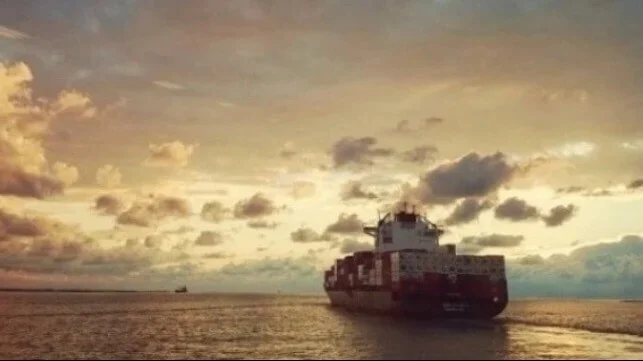PUBLISHED AUG 18, 2022 4:53 PM BY THE MARITIME EXECUTIVE
Container prices and spot shipping rates have fallen significantly year over year despite the fact the industry is entering what is traditionally peak season. While declines in demand versus the surge in volumes seen during the height of the pandemic are continuing, analysts are pointing to vessel utilization rates as an indicator that rates are liked to continue to fall.
Average container prices have declined by more than half from the last year in August as China picks up containerized trade volumes more recently, according to an analysis published today by Container xChange, a technology marketplace and operating platform for container logistic companies.
“This is the peak shipping season, and the industry expects heavy outflow of containers from China to fulfill orders from demand centers. This year, we haven’t witnessed two key trends that are a norm during this time in previous years – a rise in leasing rates and container prices in China and a decline in CAx values,” said Christian Roeloffs, Co-founder and CEO of Container xChange
In their analysis, they highlight that the Shanghai Container Availability index (CAx) has risen week to week and is dramatically above levels in 2020 and 2019 (pre-pandemic). According to Container xChange, this could potentially mean that there are more containers in China with reduced prices, making it easier for shippers and freight forwarders to plan trips from China.
Similarly, they also highlight a 17 percent decline in one-way leasing pick-up rates of containers from China to the U.S. from June to July. Additionally, the price of a cargo-worthy standard container they report has plummeted by half versus August 2021 and now.
“The decline in average container prices and leasing rates offer good opportunities for shippers and freight forwarding companies as the supply chain braces for the peak season, typically from July to September,” writes Container xChange.
“Clearly, this brings cheers to the shippers and forwarders hoping to ship cargo containers out of China,” added Roeloffs.
Against this backdrop of falling container costs, data analytics firm Sea-Intelligence reports it looked at the development of nominal vessel utilization, as this is a key parameter in gauging the strength of the market. They commented that a declining demand trend can be offset by a declining injection of capacity, especially in an environment where port congestion leads to significant vessel delays, and in turn results in capacity removal.
“Even though demand grew by 0.6 percent year-over-year in June, it doesn’t change the fact that it has been on a downwards trend ever since it spiked in peak season 2020,” said Alan Murphy. “The question is how demand growth matches up against deployed capacity.”
Sea-Intelligence reports that while demand growth is slow on the major east-west routes, capacity growth is increasing at the same time. Their analysis shows that vessel utilization is around the 89 percent mark. They highlight a correlation between vessel utilization and spot rates on Transpacific routes.
“Once utilization gets into the 90-95 percent range for the Transpacific, it effectively means all capacity is fully utilized and spot rates increase dramatically,” comments Murphy. “Now that we have had two consecutive months where utilization is below 90 percent, it is clear the market is no longer at a point which can sustain the extremely high spot rates.”
Sea-Intelligence concludes that average vessel utilization on the major trade routes continues to be below the threshold which fueled the record rate peaks over the past year and a half. They believe that the trend toward declining spot rates will continue.
Reference: https://www.maritime-executive.com/article/falling-rates-are-likely-to-continue-due-to-low-vessel-utilization-1

